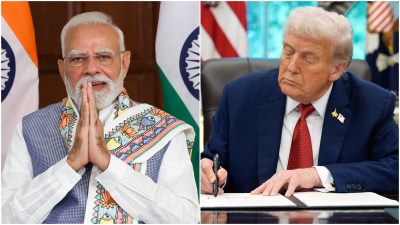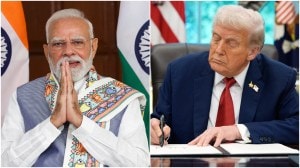Scientists to fix gaze on universe
PUNE, Dec 2: With the Giant Meterwave Radio Telescope (GMRT) becoming operational, there are plans to fully exploit the world's largest a...

PUNE, Dec 2: With the Giant Meterwave Radio Telescope (GMRT) becoming operational, there are plans to fully exploit the world’s largest and most powerful low-frequency radio telescope.
Enthused by the success gained in discovering a galactic Supernova in the middle of our galaxy, scientists at GMRT plan to concentrate on observing clusters of galaxies, finding neutral hydrogen clouds, studying remnants of Supernovas and observing pulsars across the spectrum for a better understanding of the universe.
Prof Govind Swarup, head of the Rs 50 crore project who was speaking to reporters during a visit to Narayangaon during the international symposium on “The Universe at Low Radio Frequencies” called it a quest to understand the origin of the universe and also an attempt to study the formation of new galaxies. In the past two months, GMRT scientists have discovered a lot of stars exploding. The data gathered from this will help in a better understanding in the formation of galaxies, he said.
GMRT will throw its doors open to the world’s scientific community to conduct studies. “We will seek proposals from countries and lend our facilities to improve their data gathering,” he said.
US scientists Dr W Miller Goss, director of the National Radio Astronomy Observatory expected a number of proposals to be shortly sent to GMRT for observing results. A joint project is currently in progress with the National Centre for Radio Astrophysics (NCRA) to study galactic nebulae, he said. “When Prof Swarup first told us about this project 15 years ago, most of us suspected that this was not possible,” he said. Impressed by the state-of-the-art telescope which consists of 30 dishes, each 45 m in diameter, spread over 25 km, he said that such a project would not have been possible in the U S.
Scientific data collected by observing naturally produced radio waves requires optical facilities for a better understanding of results. Prof S S Jha, director of the Tata Institute of Fundamental Research (TIFR), Pune said there was a proposal to set up a three metre optical telescope. A two-metre telescope is already operational at Leh. He said that there is a proposal to collaborate with international agencies to utilise their large optical telescopes to complement their data gathering.
Scientists are now excited by the possibility of building a telescope which is 50 times more powerful than the GMRT radio telescope. Prof Swarup said that they had held discussions with scientists in the past two days and hoped that the designs for the telescope would be ready by the year 2002. The $ 500 million project involving seven countries including India is still in a conceptual stage. A conference will be held in August next year to discuss further strategies for the project.




- 01
- 02
- 03
- 04
- 05

























